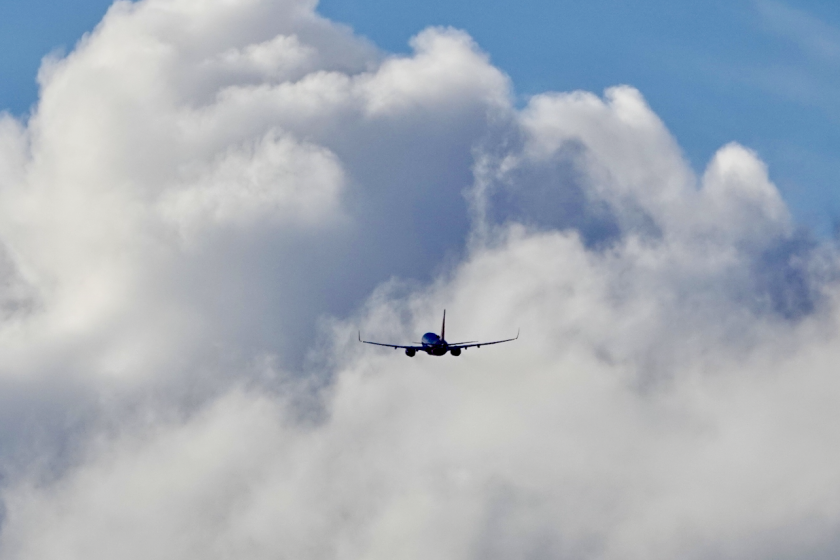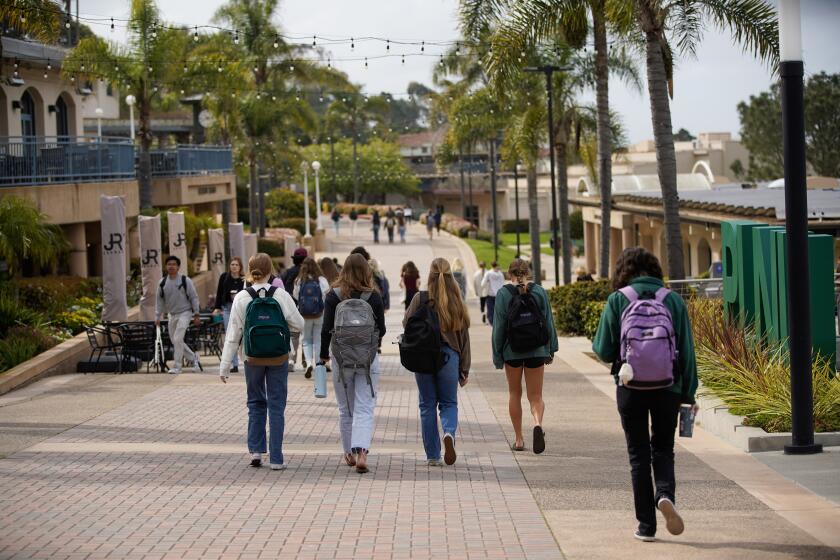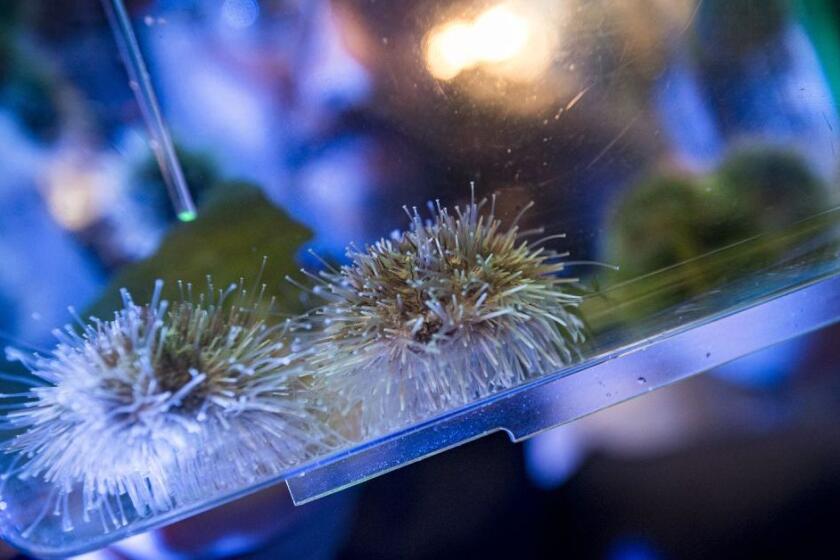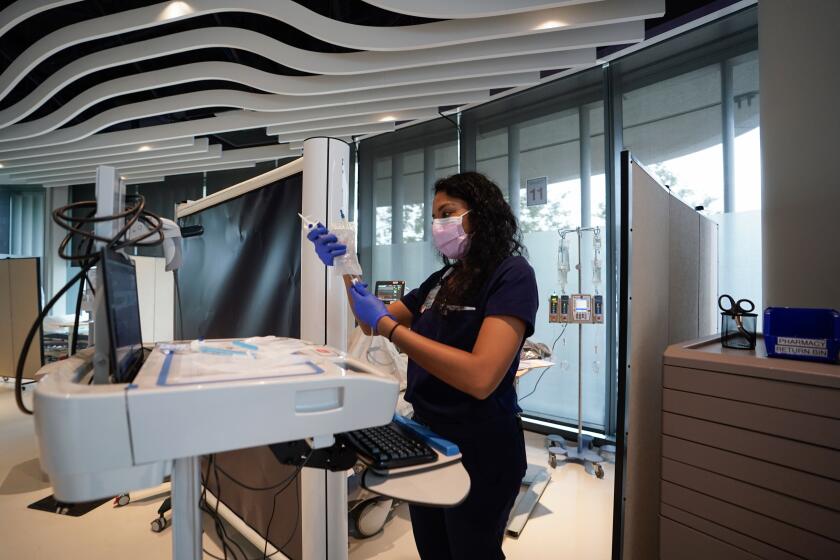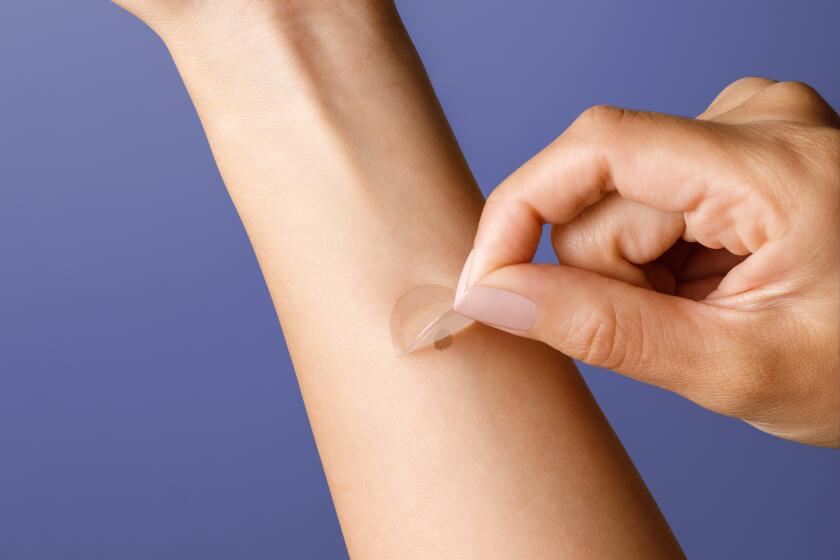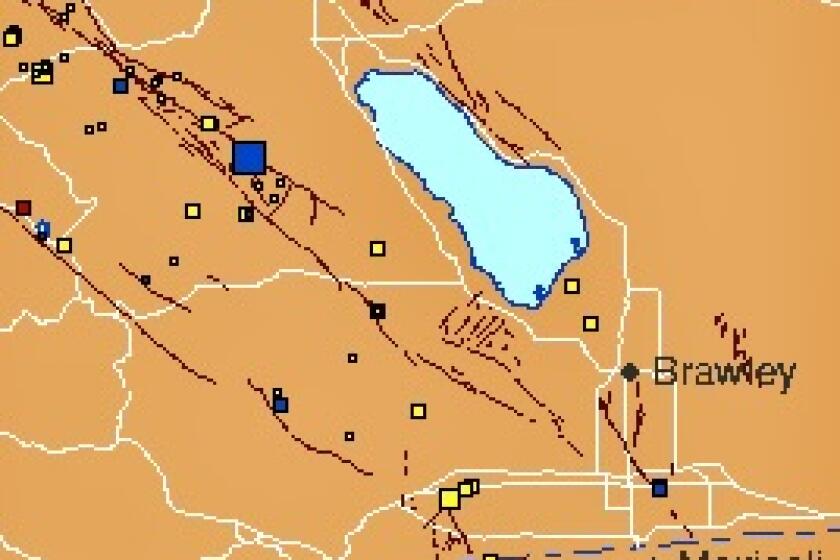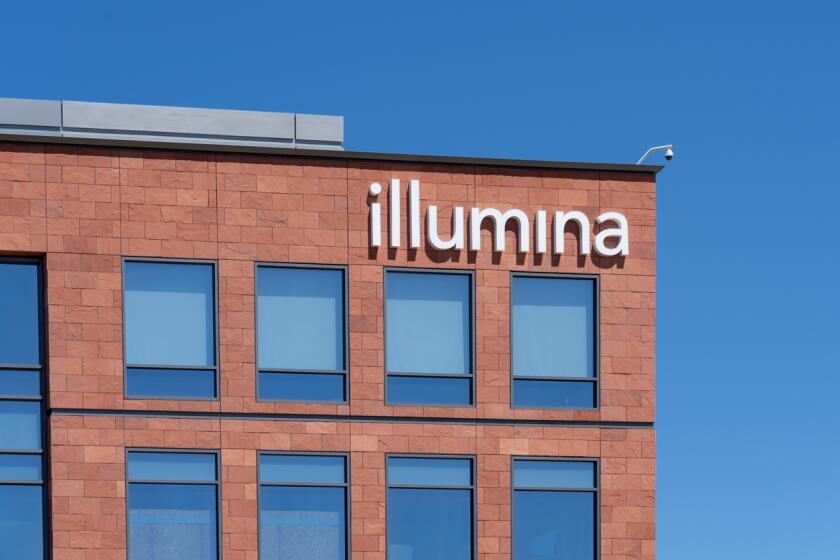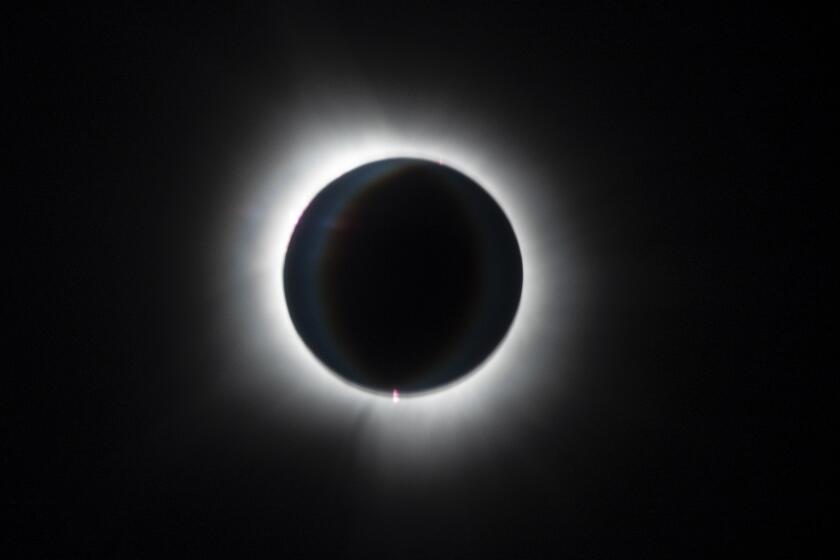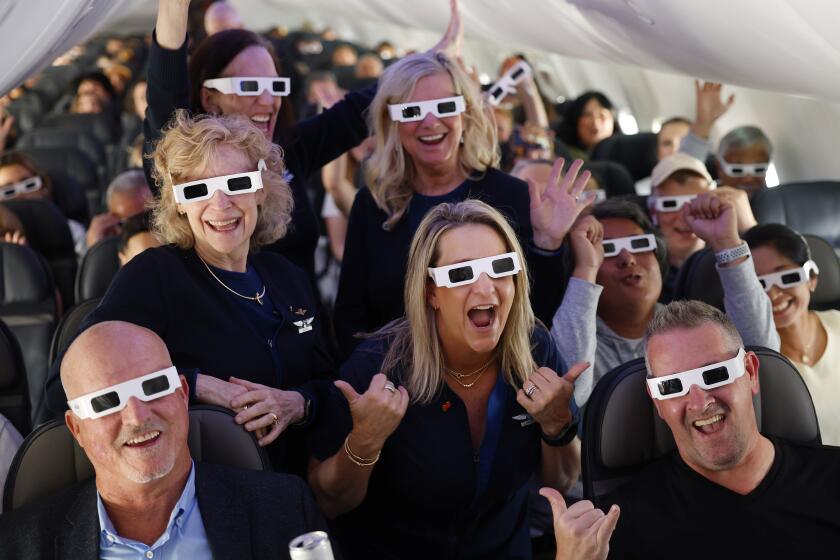New wave of scientists join San Diego universities
They’re trying to land humans on Mars, design robots to serve the sick and elderly and identify which areas of Earth will be damaged most by climate change.
They’re also looking for remnants of the “Big Bang,” evaluating Great Britain’s pending exit from the European Union and studying why a villainous gene causes Huntington’s disease.
Meet the Class of 2016. Not the students, but the scientists who’ll teach them.
From San Diego to San Marcos, the region’s major universities have been hiring scores of proven and promising scientists and engineers to cope with booming enrollment and exploit research opportunities in a region that’s a mecca for science.
The schools together recruited upward of 125 scholars, whose interests span broad areas of science. These researchers will explore everything from ways to make clunky robots more like people to figuring out how dragonflies adapt to drought.
The newcomers are about to get to work.
San Diego State University and Cal State San Marcos are set to begin classes on Aug. 29. The University of San Diego is slated to start two days later. And UC San Diego’s fall quarter is scheduled to begin Sept. 19.
The four universities will collectively serve more than 92,000 students this fall, which marks an increase of about 10,000 during the past five years.
Here’s a sampling of this year’s crop of professors:
UC SAN DIEGO
Robotics
You’ve probably read that robots are going to take over the world. While experts said most of the claims are bogus, robotic systems are becoming a bigger part of everyday life, from the operating room to battle zones to elder-care facilities.
UC San Diego has decided to become a dominant player in the field. Last year, it founded the Contextual Robotics Institute, creating a home for researchers aiming to make machines that can quickly size up what people are thinking, doing and feeling.
The goal is to produce robotic systems that anticipate and meet people’s needs, especially in health care and public safety.
To push things forward, UC San Diego recently hired a group of experts in robotics and computer science, including star roboticist Henrick Christensen. He was recruited from the Georgia Institute of Technology, where he created an acclaimed robotics research center.
Christensen immediately set an ambitious goal for UC San Diego, saying: “I want to build a research institute that, ideally, will be in the top five in the world five years from now. Why not see if we can make San Diego ‘Robot Valley.’”
His colleagues will include three young, new recruits: Laurel Riek, Nick Gravish and Ndapa Nakashole.
They work in different areas, but their research is related, especially in its practicality.
Nakashole’s focus deals with a source of great frustration: getting computer systems to understand what people say, do and write.
Siri — the “intelligent assistant” on iPhones — can answer many questions. So can supercomputers like IBM Watson, which crushed its human competitors on the TV game show “Jeopardy!”
But these systems struggle to place words and sentences into context. They also struggle with nuance and deciphering things such as sarcasm and irony.
Nakashole, who was recruited from Carnegie Mellon University, is striving to fix these language problems, and that could lead to better operating systems for phones and robots. It may even hasten the day when police are aided by robotic interrogators.
Riek just arrived from the University of Notre Dame, where she was exploring ways to get robots to work with humans in real-world environments, such as hospitals and people’s homes. The computer scientist also proposed that a code of ethics be developed for engineers who design robots that directly serve people.
Riek and co-author Don Howard said in an academic paper that they’re concerned about “the involvement of robots in particularly intimate activities such as bathing and sanitation; direct physical contact between robots and humans, as in lifting patients in and out of beds and wheelchairs; and the high probability of patients’ forming emotional bonds with robots in environments otherwise sometimes comparatively lacking in human companionship.”
Gravish’s work also involves robotics, though on a much smaller scale.
The Georgia Tech-trained professor studies the nature and movement of small creatures — bees, ants and the like. It helps him learn how to design and build micro-robots, possibly including ones that could be used in surgery.
He helped to develop a snake-like robot that might eventually be used to inspect nuclear power plants.
“Nature may help us figure things out, and we can learn a lot about biology along the way!” Gravish said.
Physics and astronomy
Steve Boggs holds one of the loftiest titles in science: He’s chair of physics at UC Berkeley, a program that has few peers.
And yet he’s leaving that post, heading south to become dean of the Division of Physical Sciences at UC San Diego. Boggs accepted the challenge of improving a sprawling division that takes in chemistry, biochemistry, mathematics and physics.
The university’s leaders want the division to be not just good, but world-class. And world-class is demanded in La Jolla, especially in chemistry, a program that feeds the region’s life-science companies.
This year’s UC San Diego recruits also include two young scientists who work in Boggs’ own field, astrophysics. Kam Arnold earned his doctorate at UC Berkeley, and Raphael Flauger arrives from the University of Texas, where he was on the faculty.
Metaphorically speaking, they’re time travelers.
Flauger and Arnold study the earliest moments of the universe, a pursuit that got a big lift at UC San Diego earlier this year. The campus received $40 million in donations for an observatory whose mission includes producing a “baby picture” of the cosmos.
In addition, UC San Diego also recruited a highly respected computer scientist, Philip Guo, who comes from the University of Rochester. Guo develops large-scale computer programs for online education, particularly data analyis, one of the hottest fields in science.
Climate change
UC San Diego is deeply linked to the study of climate change. One of the school’s founders, Roger Revelle, was known as the “father of the greenhouse effect.” His colleague Charles Keeling created the now acclaimed Keeling Curve, a measure of the amount of carbon dioxide in the atmosphere. The university’s researchers also helped to shape the recent Paris Agreement, in which nearly 200 countries agreed to fight global warming.
The school has dozens of people working on the topic, including two new, young faculty recruits, Isabel Rivera-Collazo, who earned her doctorate at the University College London, and Kate Ricke, who received her Ph.D. at Carnegie Mellon.
They hold complementary positions.
Rivera-Collazo, an environmental archaeologist, studies how people responded to climate change in the distant past. Ricke, an engineer and public policy expert, examines the potential local and regional impacts of climate change and weighs the social and economic implications.
Ricke’s work involves a daunting question: “How and where will people migrate as climate impacts worsen?”
SAN DIEGO STATE UNIVERSITY
San Diego State, which pulled in a near-record $130 million for research last year, recruited faculty with interests near and far for the coming academic year.
The new appointees include Ping Lu, a veteran aerospace engineer from Iowa State University. He arrives as the aerospace industry appears to be on the upswing in Southern California with the success of rocket companies like SpaceX.
Lu is helping NASA deal with the dicey question of how to land human explorers on Mars.
“If they come in at the wrong angle, the spacecraft could break up or skip away from the planet,” Lu said.
Kate Rubin’s attention is focused even deeper in space. The newly hired astronomer from the Harvard-Smithsonian Center for Astrophysics studies how galaxies form and evolve. SDSU has a small astronomy department, but the program has earned lots of respect in recent years, notably for its work on galaxies and extrasolar planets.
San Diego State also recruited Kim Twist, a young political scientist who earned her doctorate at UC Berkeley. Her research includes one of the hottest political stories of the year: Great Britain’s decision to leave the European Union, widely known as Brexit.
“The implications of Brexit are very hard to know, because it’s unprecedented,” Twist said. “This may have been further complicated by the election of (Prime Minister) Theresa May, who doesn’t seem to be in a hurry to conclude the process.”
In the field of anthropology, Isaac Ullah is joining the faculty from Arizona State University.
“My expertise is in the archaeology of the Neolithic period — the time when humans first came to rely on domesticated plants and animals for their main sources of food,” Ullah said. “This occurred in the Near East very early on, and eventually, these early Near Eastern farmers began to spread to the west — interestingly mostly by boat.”
A fifth recruit, bioengineer Shawn O’Connor, will work in SDSU’s new Smart Health Institute, which specializes in wearable health sensors. O’Connor was a postdoctoral fellow at UC San Diego, where he explored the issues of balance and mobility, especially in older people.
San Diego State also hired Jayson Richardson, an educational leadership expert who earned his doctorate at the University of Minnesota. Richardson focuses on many aspects of technology, especially on evaluating how well digital devices are used in schools.
CAL STATE SAN MARCOS
The campus, created less than 30 years ago, has become one of the most important institutions in North County, a fact reflected by the school’s booming enrollment. Five years ago, the university had 10,000 students. This fall, the figure will hit 15,000.
The faculty is growing, too. The school recently added Jane Kim, a biologist from Tufts University who studies how cells duplicate in their genomes. Such work is important to understanding how Huntington’s disease and other disorders progress.
The university also recruited Diego Sustaita, an ecology researcher from Brown University who looks at how an animal’s anatomy affects key functions such as eating and building habitats. He mostly focuses on birds.
UNIVERSITY OF SAN DIEGO
The University of San Diego is expanding as well, although at a slower rate. The campus will add about 150 students this fall, pushing enrollment to a record high 8,400.
There will be many new professors to help with the increased load, including Anthony Bell, a biochemist who arrives from the University of Southern Mississippi. He’s been studying HMGB1, a protein that can influence everything from sepsis to lupus to cancer. Such research is important in drug discovery.
USD also recruited Kate Boersma, a young biologist who earned her doctorate at Oregon State University. She studies a subject of special importance in Southern California — drought. Specifically, Boersma studies how drought affects animals that live in lakes and ponds.
“We expect to see an increasing number of extreme droughts,” Boersma said.
Get Essential San Diego, weekday mornings
Get top headlines from the Union-Tribune in your inbox weekday mornings, including top news, local, sports, business, entertainment and opinion.
You may occasionally receive promotional content from the San Diego Union-Tribune.


